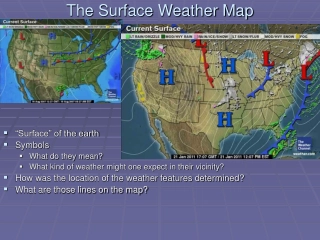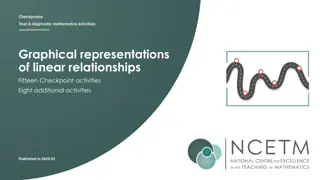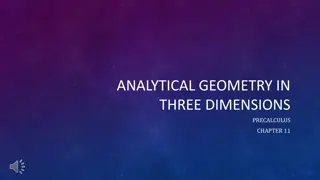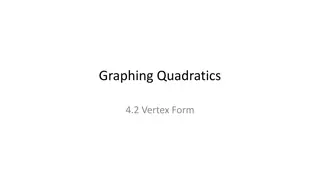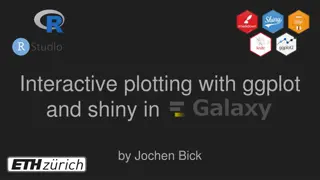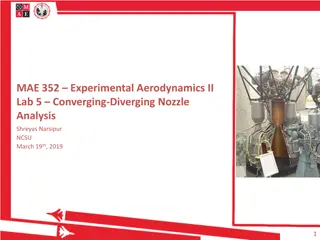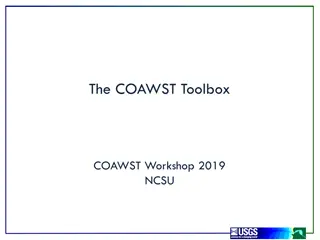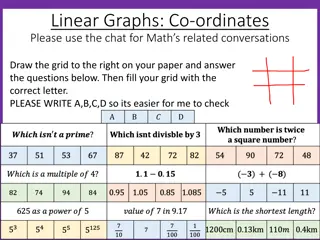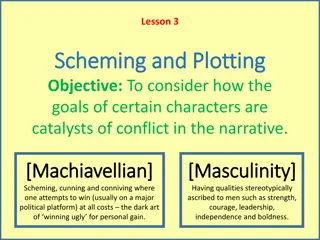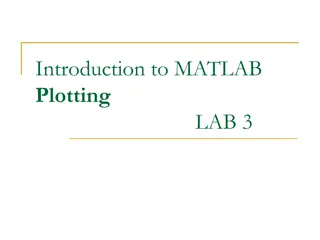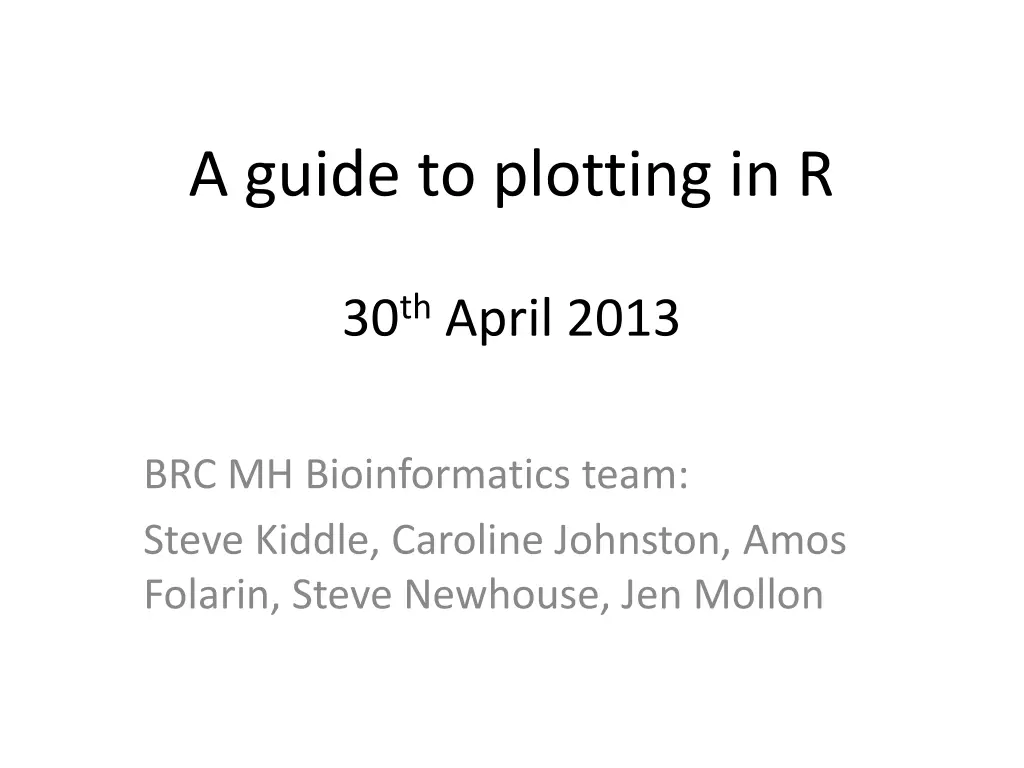
Comprehensive Guide to Plotting in R for Bioinformatics Team
Learn how to plot data in R with this comprehensive guide tailored for the Bioinformatics team. Topics covered include basic plot functions, heatmap generation, GWAS plots, interactive plotting, and more. Follow along with hands-on examples and tips from experts in the field.
Download Presentation

Please find below an Image/Link to download the presentation.
The content on the website is provided AS IS for your information and personal use only. It may not be sold, licensed, or shared on other websites without obtaining consent from the author. If you encounter any issues during the download, it is possible that the publisher has removed the file from their server.
You are allowed to download the files provided on this website for personal or commercial use, subject to the condition that they are used lawfully. All files are the property of their respective owners.
The content on the website is provided AS IS for your information and personal use only. It may not be sold, licensed, or shared on other websites without obtaining consent from the author.
E N D
Presentation Transcript
A guide to plotting in R 30thApril 2013 BRC MH Bioinformatics team: Steve Kiddle, Caroline Johnston, Amos Folarin, Steve Newhouse, Jen Mollon
Programme Brief review of required R knowledge The basics - plot() More simple plots histograms, boxplots, plotting data points Heatmaps, dendograms/clustering Forest plots, density plots, plotting lines (best fit, lowess) Formatting and exporting Useful GWAS plots (Manhattan, QQ plots) Interactive plots, 'playwith' package (plotting interface)
Review & basic plot() function Jen Mollon
The iris data - review data(iris)
The iris data - review Summarise data: Select columns using column name or number: Call a function function.name(parameters)
R: Reference card http://cran.r-project.org/doc/contrib/Short-refcard.pdf "Short" 4-page reference card: accessing help input/output selecting, extracting, manipulating data strings, basic math/stats functions, model-fitting plotting programming tools: functions, conditioning
Behaviour of plot() numeric variables data(iris) plot(iris$Petal.Length) y-axis label is variable name x-axis label is "Index" row number of data frame
Behaviour of plot() numeric variables plot(iris$Petal.Length,iris$Petal.Width) 2 numeric variables: scatterplot
Behaviour of plot() numeric/factor plot(iris$Species,iris$Petal.Width) Factor & numeric: boxplot What happens if you switch the order? Try: plot(iris$Petal.Width, iris$Species)
Behaviour of plot() data frame plot(iris) Creates all pairwise scatterplots. NOTE: Factor converted to numeric
Behaviour of plot() - regression fit<- lm(iris$Petal.Length~iris$Species+iris$Petal.Wi dth) summary(fit) plot(fit) <return> to go through various diagnostic plots
Other plot() behaviours pc_iris=prcomp(iris[,1:4]) plot(pc_iris) group=sample(x=c("a","b","c","d","e","f","g"," h","i","j"),size=500,replace=T) plot(table(group)) methods(plot)
Simple plots, heatmaps, dendograms Steve Kiddle
Histogram examine distribution of variable hist(iris$Petal.Width)
Boxplot as shown earlier plot(iris$Species,iris$Petal.Width) Factor & numeric: boxplot What happens if you switch the order? Try: plot(iris$Petal.Width, iris$Species)
Beeswarm boxplot equivalent showing raw data install.packages('beeswarm') library('beeswarm') beeswarm(Petal.Width~Species,data=iris) Another example
Hierarchical clustering Euclidean distance plot(hclust(dist(t(iris[,1:4]))), xlab="Iris characteristics", ylab="Distance") What is each function doing?
Hierarchical clustering Euclidean distance plot(hclust(as.dist(1-cor(iris[,1:4]))), xlab="Iris characteristics", ylab="1-correlation") What is each function doing? Why is this result different to the last?
Drawing heatmaps with Heatmap.2 Introduction at: www2.warwick.ac.u k/fac/sci/moac/peo ple/students/peter_ cock/r/heatmap/
Forest plots, density plots, adding lines Amos Folarin
Forest Plot (metafor package) A Forest Plot is a visualisation meta-analysis effect sizes. The metafor package allows you to calculate Effect Sizes and then fit fixed-, random-, and mixed-effects models to these Effect Sizes. (see help page: ? metafor-package ) For fixed- and random-effects models (i.e., for models without moderators), a polygon is added to the bottom of the forest plot, showing the summary estimate based on the model (with the outer edges of the polygon indicating the confidence interval limits). a dotted line indicates the (approximate) bounds of the credibility interval Effect Size, + Confidence Intervals, for single study Effect Size (diamond-centre), + Confidence Intervals (diamond- horizontal), for Meta-analysis
Forest Plot (metafor package) We ll use the example dataset dat.bcgwith the package metafor dat.bcg: Is the results from 13 studies examining the effectiveness of the Bacillus Calmette-Guerin (BCG) vaccine for preventing tuberculosis. trial author 1 Aronson 2 Ferguson & Simes 3 Rosenthal et al 4 Hart & Sutherland 5 Frimodt-Moller et al 6 Stein & Aronson 7 Vandiviere et al 8 TPT Madras 9 Coetzee & Berjak 10 Rosenthal et al 11 Comstock et al 12 Comstock & Webster 13 Comstock et al year 1948 1949 1960 1977 1973 1953 1973 1980 1968 1961 1974 1969 1976 tpos tneg cpos cneg ablat alloc 4 6 3 119 300 228 11 29 11 248 47 372 10 499 45 65 141 128 274 209 44 random 55 random 42 random 52 random 13 alternate 44 alternate 19 random 13 random 27 random 42 systematic 18 systematic 33 systematic 33 systematic 62 33 180 13536 5036 1361 2537 87886 7470 1699 50448 2493 16886 12619 5761 1079 619 87892 7232 1600 27197 2338 17825 8 505 29 17 186 5 3 27 29 *trial* numeric trial number *author* character author(s) *year* numeric publication year *tpos* numeric number of TB positive cases in the treated (vaccinated) group *tneg* numeric number of TB negative cases in the treated (vaccinated) group *cpos* numeric number of TB positive cases in the control (non-vaccinated) group *cneg* numeric number of TB negative cases in the control (non-vaccinated) group *ablat* numeric absolutelatitude of the study location (in degrees) *alloc* character method of treatment allocation (random, alternate, or systematic assignment) 2x2 table frequencies Positive Negative Treated Tpos (ai) Tneg (bi) Control Cpos (ci) Cneg (di)
Forest Plot (metafor package) ### load BCG vaccine data data(dat.bcg) # As a minimum, we need to provide a measure of Effect Size ( e.g. "RR" log relative risk, "OR" log odds ratio, etc) and some Variance Measure. This can generally be provided with the escalc( ) function. ### calculate log relative risks and corresponding sampling variances dat <- escalc(measure="RR", ai=tpos, bi=tneg, ci=cpos, di=cneg, data=dat.bcg) ### default forest plot of the observed log relative risks (is effectively rma(yi, vi, method="FE")) x11(); forest(dat$yi, vi=dat$vi) ### forest plot of the observed relative risks with some embellishment x11(); forest(dat$yi, dat$vi, slab=paste(dat$author, dat$year, sep=", "), transf=exp, alim=c(0,2), steps=5, xlim=c(-2,3.5), refline=1)
Forest Plot (metafor package) ### Function to fit the meta-analytic fixed- and random-effects models with or without moderators via the linear (mixed-effects) model. ### random-effects model (method="REML" is default, so technically not needed) x11() res <- rma(yi, vi, data=dat, method="REML") forest.rma(res) ### subgrouping versus using a single model with a factor (subgrouping provides ### an estimate of tau^2 within each subgroup, but the number of studies in each ### subgroup get quite small; the model with the allocation factor provides a ### single estimate of tau^2 based on a larger number of studies, but assumes ### that tau^2 is the same within each subgroup) res.a <- rma(yi, vi, data=dat, subset=(alloc=="alternate")) res.r <- rma(yi, vi, data=dat, subset=(alloc=="random")) res.s <- rma(yi, vi, data=dat, subset=(alloc=="systematic")) x11(); forest.rma(res.a) x11(); forest.rma(res.r) x11(); forest.rma(res)
res.s (random) res.s (systematic) res.a (alternative)
Bi- and Tri-variate Relationships SCATTERPLOTS AND SMOOTH FITS
Smoothed Lines of Fit (Line of Local Regression) Visualisation using the scatter plots (via plot(x,y) or cars::scatterplot(x,y)) abline() provide a line of best fit Smoothed local regression in R is provided by the LOESS functions Note: there are two similarly named ones, don t confuse them as they have different defaults!) lowess() older version loess() newer, formula based version
plot + lowess ### A basic scatterplot ### look at the dataset help page ?mtcars ### the default scatter plot plot(mtcars$wt, mtcars$mpg, main= "Car weight vs miles per gallon ", xlab= "mpg Miles/(US) gallon ", ylab= " wt Weight (lb/1000) " ) abline(lm(mtcars$mpg~mtcars$wt), col="green", lty=2) lines(lowess(mtcars$wt, mtcars$mpg), col="red", lty=1 )
car::scatterplot() ### a more sophisticated scatterplot in car package ### allows you to subset (e.g. here subset on 'Species') library(car) scatterplot(Sepal.Length~Petal.Length|Spec ies, data=iris, main="Iris Flower Sepal vs Petal Length", boxplots="xy" ) ### also documentation for see: ?scatterplotMatrix
3D scatterplots rgl:plot3d and Rcmdr:scatter3d ### To explore >2 dimensions as rotatable plots use one or the 3D plotting devices library(rgl) attach(iris) plot3d(Sepal.Width,Sepal.Length,Petal.Length, col="red", size=5) ### or library(Rcmdr) attach(iris) scatter3d(Sepal.Width,Sepal.Length,Petal.Length)
Interactive plots, plotting interface (playwith) Cass Johnston
playwith library install.packages("playwith") Requires GTK+ 2.10.11 or later. Will install automatically on Windows On desktop linux, gtk2 is generally installed, but might need updated. I also had to install gtk2-devel on RHEL6. See the playwith project page for a link to a Mac installer: https://code.google.com/p/playwith/
Regular R Plot R Plot in playwith x<-1:100 y<-2*x+50 x<-1:100 y<-2*x+50 plot(x,y,pch=".") library(playwith) playwith(plot(x,y )
Settings Tools > Plot Settings Set titles, axis labels, axes scales etc.
Style Style > Set point style, arrow style, brush style etc
New data - reload and redraw View> Redraw Reload and redraw Doesn't seem to be much difference between the two and I couldn't find any documentation. It is possible to define callbacks that fire on initialisation and others that fire each time the plot is drawn, so there probably are differences when using certain tools.
labels my.data<-data.frame(x,y) rownames(my.data)<- paste("number_",x,sep="") Click Identify Click a point - Add label to point Labels > Set Labels to> Data x values
brush Select brush > click points to highlight. Hold shift to add points to existing selection Or click and drag to select a region of points Or Labels > Select from table to chose specific points to be brushed (ctrl to add to existing selection)
Annotations and Arrows Select Annotate Click on the plot where you want the annotation Enter the text Select Arrow, click and drag on the plot where you want the arrow to go Style > Set arrow style
Saving File > Save saves the plot as pdf File > Save Code saves the code that generated the plot as a runnable R script Note that you'll need to have the relevant data loaded into your R environment (ie. my.data) for this to work. I also found that I had to manually load a library to get it to work: library(gridBase) source("path/to/plot.R")
Advanced - add your own tools: Define a function to be called by tool hello_handler<-function(widget, playState){ gmessage("hello") } Define a tool as a list. The only required element is name, however there are many other options. For a full list: ?playwith my.tool<-list(name="my.tool", label="Say Hello", callback=hello_handler) tell playwith to use the tool playwith(plot(my.data), tools=list(my.tool)) Not much documentation yet Click Here! More complex examples at https://code.google.com/p/playwith/
Applied R plotting : GWAS Manhattan Plot Get R code for Manhattan Plot https://sites.google.com/site/mikeweale/soft ware/manhattan Download : manhattan_v1.R Save to working directory Open it up in a text editor and look at instructions. Do not make any changes!
GWAS Manhattan Plot In R type: source( manhattan_v1.R ) ls() [1] "manhattan" "wgplot" gwas <- read.table( plink.assoc ,head=T) head(gwas) dim(gwas) data_to_plot <- data.frame(CHR=gwas$CHR, BP=gwas$BP, P=gwas$P) manhattan(data_to_plot, GWthresh=5e-8, GreyZoneThresh=1e-5, DrawGWline=FALSE)
GWAS Manhattan Plot Exporting plots PDF pdf("my_first_MH_plot.pdf",width=8,height=6) manhattan(data_to_plot, GWthresh=5e-8, GreyZoneThresh=1e-5, DrawGWline=FALSE) dev.off() TIFF (publication) tiff(filename="my_first_MH_plot.tiff",res=300,width=6, height = 3,units="in") manhattan(data_to_plot, GWthresh=5e-8, GreyZoneThresh=1e-5, DrawGWline=FALSE) dev.off()

